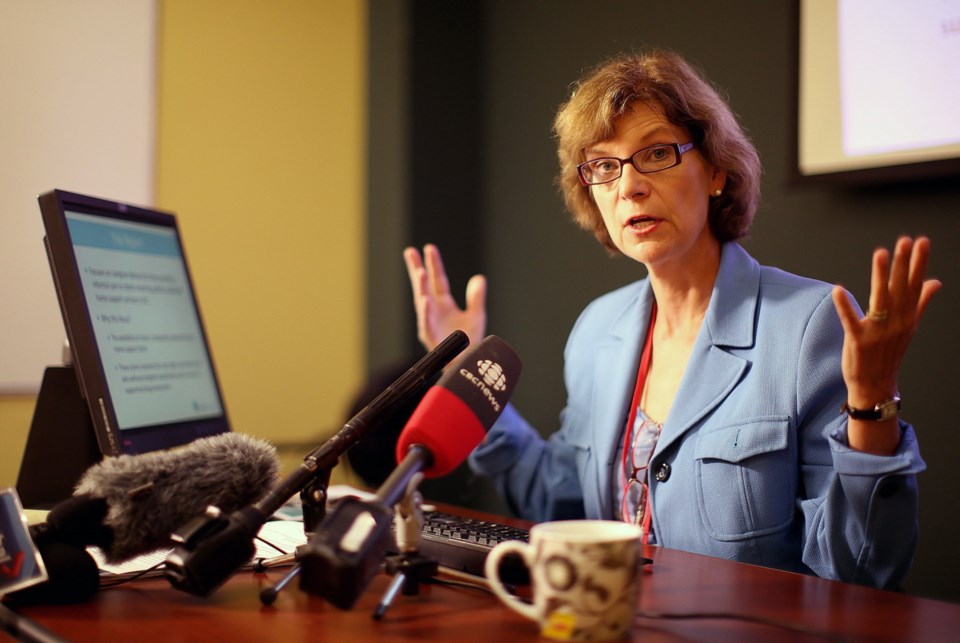The rate of seniors in care facilities prescribed antipsychotic medication is decreasing, but almost 50 per cent are on antidepressants, a concerning figure, according to B.C. seniors advocate.
The annual Residential Care Facilities Quick Facts Directory report, which covers almost 300 publicly subsidized care homes in B.C., includes everything from room configuration, languages spoken by staff and food costs, to the use of medication, restraints and therapies.
“There is an encouraging trend where we see a marked reduction in the use of antipsychotic medications for residents where an appropriate diagnosis is not evident,” said seniors advocate Isobel Mackenzie.
Twenty-five per cent of residents took antipsychotics without a diagnosis of psychosis in 2016-17, down from 31 per cent in 2014-15.
In 2016-17, 24 per cent of seniors in residential care facilities were diagnosed with depression, yet 48 per cent were on antidepressants. This number has been fairly constant through the past three years.
The possibility that antidepressants are being prescribed without a proper diagnosis is concerning because side-effects of these drugs can include fatigue, confusion, lethargy — all of which can be mistaken as symptoms of dementia.
A 2015 report from the Office of the Seniors Advocate indicated that a high percentage of seniors were prescribed an antipsychotic, antidepressant or even benzodiazepine, a sedative that can help with anxiety and insomnia, within seven days of admission, despite no prior history of use.
B.C. is still one of the highest users of antipsychotics without a diagnosis of psychosis, Mackenzie said.
Another controversial issue in this year’s directory is direct-funded care hours per resident.
Fifteen per cent of care homes were meeting the provincial guideline of 3.36 direct-care hours per resident, per day in 2016-17, up from nine per cent the previous year, Mackenzie said.
“We are falling short,” she said. “We can’t take a lot of heart from this when 85 per cent are still not meeting provincial guidelines.”
In response, the Hospital Employees’ Union called for urgent action to improve understaffing.
“When there are not enough staff on shift to do their jobs to the highest possible standard, seniors and those who provide their care are put at risk,” said HEU secretary-business manager Jennifer Whiteside.
“We clearly need to fast-track plans to improve staffing levels.”
A review released in March 2017 said it would cost at least $113 million a year to increase staffing at facilities to meet the guidelines for direct-care hours.
The province is investing $500 million over the next four years as part of a Ministry of Health action plan to improve care for seniors across the system, including increasing direct-care hours for seniors in residential care.
Summary highlights
• Overall, 87 per cent of the rooms in residential care are single-occupancy rooms, nine per cent are double-occupancy, and four per cent have rooms with more than two beds.
• The directory contains information on 293 residential care facilities that have 27,142 publicly subsidized beds. Of these, 110 facilities are operated directly by a health authority and 183 are operated by a contractor with funding from the health authorities.
• The average age of residents in long term care facilities is 85 years, with 59 per cent 85 or older and five per cent younger than 65; 65 per cent of residents are female.
• Only 15 per cent of facilities met the provincial guideline of 3.36 hours of direct care per resident per day in 2016-17. This is an improvement over the previous year, when only nine per cent were meeting the guideline.
• Data on the average funded food costs per resident, per day were collected for the first time in 2016-17. The average funded food cost in B.C. in 2016-2017 was $8 per resident, per day. However, there was significant variation among facilities, from $4.92 to $18.44 per resident, per day. Overall, 24 per cent of facilities contract out food services, and 91 per cent of facilities have food prepared on site.
• Between 2015-16 and 2016-17, substantiated complaints fell to 181 from 207.
• Between October 2016 and September 2017, eight per cent of residents had daily physical restraints.



